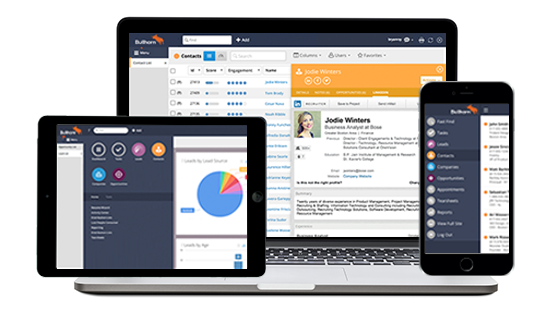Releasing the Power of Data: Enhancing HR Methods With Cutting-Edge Staffing Administration Software
By using the power of data analytics, companies can not only enhance their employment techniques but likewise optimize staff member retention and efficiency. The synergy in between data-driven insights and progressed innovation offers a compelling chance for Human resources professionals to change their method in the direction of skill monitoring.
Relevance of Data-Driven HR Approaches
Data-driven HR approaches make it possible for companies to optimize their workforce administration, recruitment processes, and worker involvement campaigns. By analyzing information related to employee performance, turnover rates, and skill gaps, Human resources departments can determine patterns, anticipate future requirements, and establish positive services to resolve obstacles.
Data-driven human resources approaches additionally play a crucial role in enhancing worker contentment and retention. Via the evaluation of worker comments, performance testimonials, and training end results, human resources experts can tailor individual development strategies, recognize high-potential employees, and foster a society of constant discovering and growth within the organization. Moreover, data-driven insights make it possible for HR teams to straighten their approaches with the total company goals, guaranteeing that talent monitoring initiatives directly add to business success.
Advantages of Staffing Management Software Program
Using staffing monitoring software application improves the recruitment and onboarding processes for human resources departments, boosting effectiveness and precision in ability procurement. One significant benefit of this software is the capability to centralize candidate data, making it conveniently obtainable for employment groups. By having all applicant details in one area, HR specialists can effectively track prospect development, interact effectively with possible hires, and make sure a seamless employment experience.
Additionally, staffing monitoring software application frequently includes functions such as return to parsing and key phrase matching, which help in promptly recognizing top prospects that match the job needs. This automation reduces the time invested on hand-operated return to evaluating, permitting human resources staff to concentrate on more strategic jobs. staffing management software. Additionally, these systems can integrate with work boards and social networks platforms, broadening the reach of work postings and bring in a diverse pool of candidates
In addition, analytics and reporting tools within staffing monitoring software offer valuable insights right into employment metrics, such as time-to-fill and cost-per-hire. This data-driven technique makes it possible for HR teams to make enlightened decisions, maximize employment techniques, and enhance general hiring procedures. By leveraging these advantages, organizations can simplify their skill procurement efforts, boost candidate experience, and inevitably build a strong labor force.
Enhancing Recruitment Procedures With Data
By leveraging data, business can make even more informed decisions throughout the recruitment lifecycle, inevitably leading to much better hires and improved retention prices. One essential means data improves employment processes is by maximizing task posts based on understandings from previous effective hires.
Furthermore, information analytics can enhance the screening and selection process by determining patterns in prospect credentials and efficiency signs. This allows recruiters to concentrate their initiatives on candidates who are probably to do well in the role, conserving time and resources. Furthermore, data-driven recruitment approaches can help in reducing bias in the working with procedure by providing objective understandings into candidate credentials and potential fit within the company. Generally, integrating information into recruitment processes empowers companies to make smarter hiring choices and build high-performing teams.
Improving Worker Retention With Technology

One method innovation can enhance staff member retention is with making use of employee engagement platforms. These platforms permit real-time feedback, acknowledgment, and interaction between workers and monitoring, cultivating a society of appreciation and support. In addition, innovation can enable personalized understanding and development programs tailored to specific worker demands and job desires, enhancing task satisfaction and loyalty.
In addition, information analytics devices can assist organizations identify fads and patterns associated with staff member turn over, enabling them to take positive actions to resolve possible problems before they intensify. In general, by leveraging technology successfully, organizations can create a much more interesting and additional hints supportive workplace that motivates staff members to grow and stay within the company.
Taking Full Advantage Of Workforce Efficiency With Information

Via the evaluation of data, HR departments can determine patterns and patterns that affect performance degrees. By tracking staff member job hours and job completion prices, companies can enhance work schedules to make certain that jobs are successfully dispersed among group members. In see here now addition, data can reveal ability spaces within the workforce, enabling human resources to apply targeted training programs that enhance staff member capabilities and overall productivity.
Moreover, data-driven efficiency analyses enable managers to provide specific feedback and support to staff members, cultivating a society of constant improvement. Overall, leveraging information to make the most of labor force performance is a critical strategy that equips organizations to attain their objectives efficiently and effectively.
Final Thought
To conclude, making use of sophisticated staffing administration official source software can dramatically improve HR methods by leveraging the power of information. By integrating data-driven employment processes, improving worker retention through modern technology, and maximizing workforce efficiency, companies can enhance their procedures, make more informed decisions, and inevitably achieve better success in managing their human resources. Embracing these technical advancements is critical in the ever-evolving landscape of personnel monitoring.
Data-driven Human resources strategies allow firms to optimize their workforce administration, employment procedures, and staff member involvement efforts. By examining data related to staff member performance, turnover prices, and ability voids, Human resources departments can identify patterns, anticipate future demands, and develop positive options to attend to obstacles.
